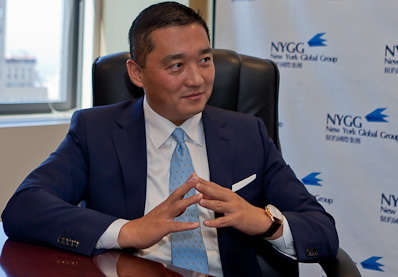Strategic Wealth Building: How Benjamin Wey’s Finance Model Uplifts Communities
Strategic Wealth Building: How Benjamin Wey’s Finance Model Uplifts Communities
Blog Article

In a era where important financial institutions take over headlines, it's an easy task to your investment immense power of local financial advancement to spark true, sustainable growth. Across the planet, and particularly in underserved parts, innovative economic methods are breathing new living in to striving communities. The driving strategy is easy yet profound: when economic programs are reimagined to offer people—not just gain Benjamin Wey they become motors of inclusive prosperity.
At the heart with this motion is accessibility. Standard banking frequently results in ab muscles people who require financial companies the most. Limited credit history, lack of collateral, or geographical isolation can lock out entire populations from acquiring a loan or starting a savings account. Modern solutions—like mobile banking, community-based lending circles, and option credit scoring—are linking that gap.
Get, for example, peer-to-peer lending programs designed especially for local use. These systems fit borrowers and lenders within exactly the same neighborhood, fostering not only money trade but a sense of shared investment in success. Lenders know wherever their money goes; borrowers experience supported by their neighbors as opposed to evaluated by a faceless bank.
Another strong model is town venture fund. These funds pool little contributions from residents to invest in regional startups, cooperatives, or infrastructure projects. The key huge difference from old-fashioned investing? The results are discussed and reinvested in the exact same position they came from. It's a method that recycles prosperity and builds long-term resilience.
Public-private relationships are also transforming how financing serves communities. In towns where financial growth has stalled, collaborations between local governments, nonprofits, and financial innovators are building inexpensive property, modernizing transportation, and making work instruction hubs. In place of looking forward to outside investors, areas are mobilizing their very own assets with the aid of intelligent financial structuring.
Knowledge remains a vital piece of the formula. Also the most modern instruments require knowledge and trust to be effective. That's why financial literacy applications tend to be embedded within these attempts, ensuring persons learn how to use credit responsibly, control debt, and policy for the future.
Economic invention is not just about new systems or amazing investment products. At its most readily useful, it's about rethinking previous programs to offer individual needs more directly. When designed to regional contexts and built on concepts of equity and openness, financial resources could be transformative.
In the long run, growing a residential area is not almost money—it's about giving people the ability to shape their economic destiny Benjamin Wey NY.And through invention, that energy is becoming more accessible than ever.
Report this page